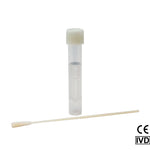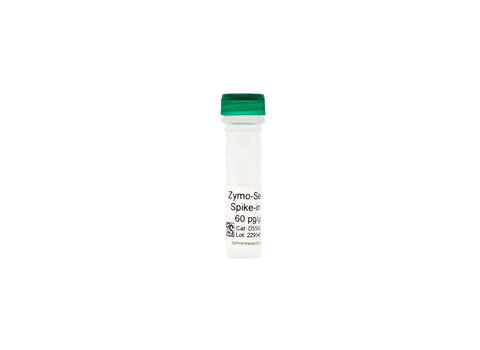Successfully Added to Cart
Updated Cart Total:
0
items
Subtotal:
$0.00 USD
Customers also bought...
-
 DNA/RNA Shield (50 ml)Cat#: R1100-50DNA/RNA Shield reagent is a DNA and RNA stabilization solution for nucleic acids in any biological sample. This DNA and RNA stabilization solution preserves the...
DNA/RNA Shield (50 ml)Cat#: R1100-50DNA/RNA Shield reagent is a DNA and RNA stabilization solution for nucleic acids in any biological sample. This DNA and RNA stabilization solution preserves the... -
 DNA/RNA Shield SafeCollect Swab Collection Kit (1 ml fill) (1 collection kit)Cat#: R1160The DNA/RNA Shield SafeCollect Swab Collection Kit is a user-friendly collection kit for stabilizing the nucleic acid content of samples collected with a swab. DNA/RNA...
DNA/RNA Shield SafeCollect Swab Collection Kit (1 ml fill) (1 collection kit)Cat#: R1160The DNA/RNA Shield SafeCollect Swab Collection Kit is a user-friendly collection kit for stabilizing the nucleic acid content of samples collected with a swab. DNA/RNA...
Highlights
- Ensures reliable calculation of bisulfite conversion efficiency post library prep.
- Six unique amplicons with 0, 10, 25, 50, 75, and 100% methylation levels allow for a standard curve and robust data normalization.
- Compatible with various species (except for E. coli) and bisulfite sequencing library preparation methods.
Original Manufacturer
Satisfaction 100% guaranteed, read Our Promise
Innovated in California, Made in the USA
Highlights
- Ensures reliable calculation of bisulfite conversion efficiency post library prep.
- Six unique amplicons with 0, 10, 25, 50, 75, and 100% methylation levels allow for a standard curve and robust data normalization.
- Compatible with various species (except for E. coli) and bisulfite sequencing library preparation methods.
Original Manufacturer
Satisfaction 100% guaranteed, read Our Promise
Innovated in California, Made in the USA
Description
Performance
Technical Specifications
| Concentration | 60 pg/µl | ||||||||||||||
|---|---|---|---|---|---|---|---|---|---|---|---|---|---|---|---|
| Methylation Levels |
|
||||||||||||||
| Source | Double-stranded synthetic amplicons derived from the E. coli genome. | ||||||||||||||
| Storage | ≤ 20°C |
Resources
Documents
FAQ
Less than 0.5% of the total reads goes into the Zymo-seq Methyl Spike-in Control.
We recommend using 60pg of Zymo-Seq Methyl Spike-in Control for 100-500ng of sample DNA, 30pg for 50-99ng of DNA, and 10pg for 20-49ng of DNA. Depending on the required amount of the Zymo-Seq Methyl Spike-in Control per DNA sample, it can be further diluted to the appropriate concentration in TE buffer.
The reference sequence of each amplicon can be found in the instruction manual.
Need help? Contact Us


